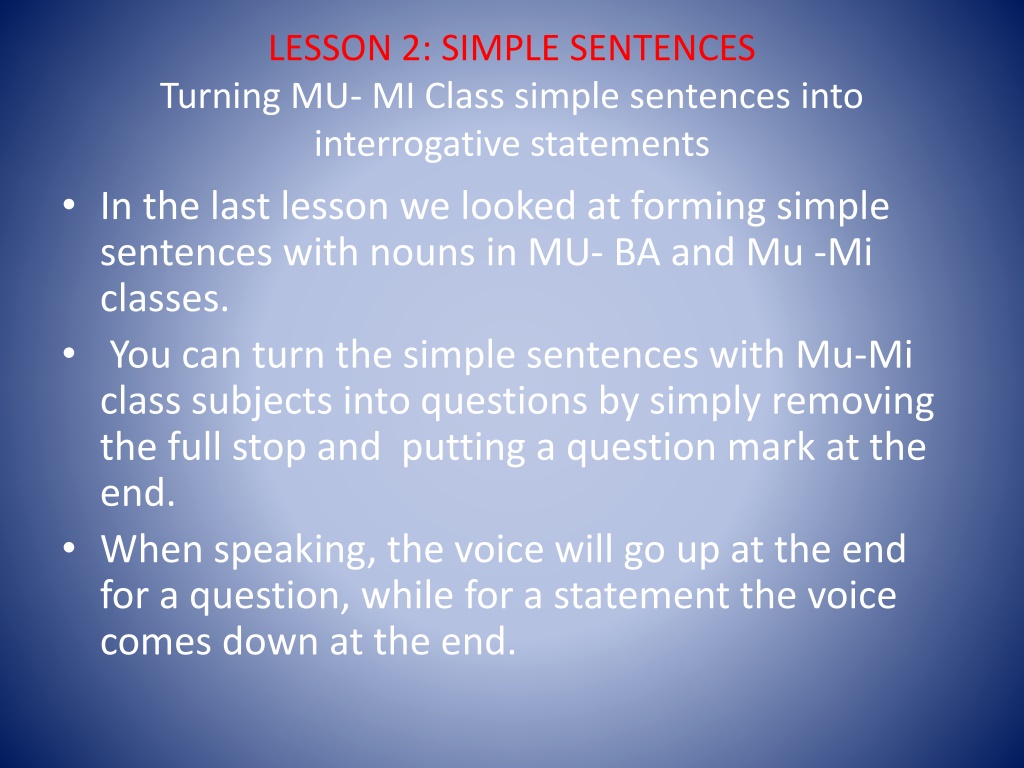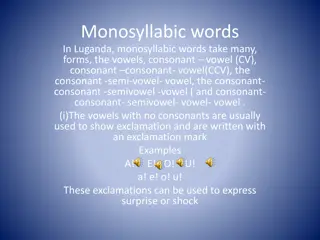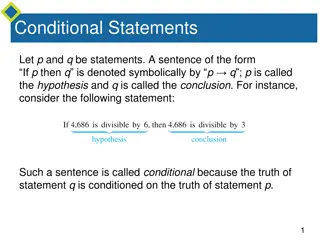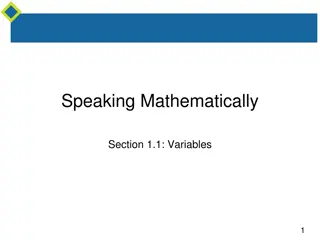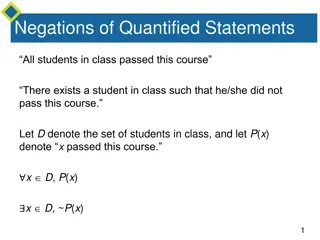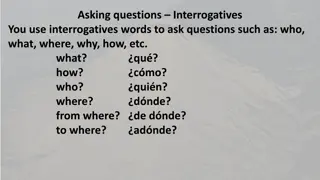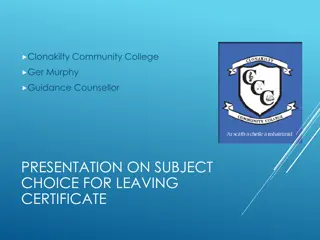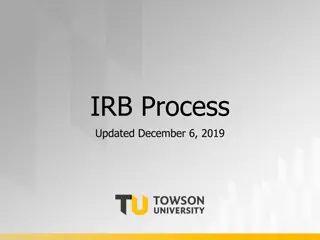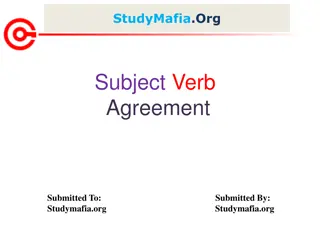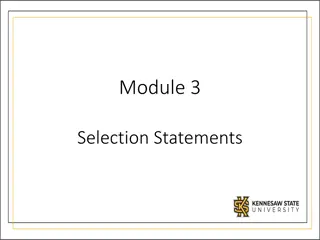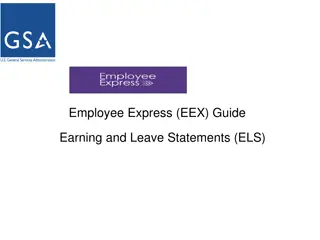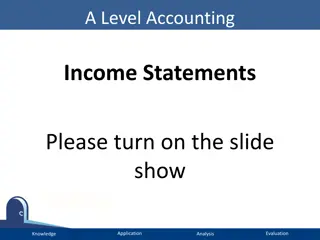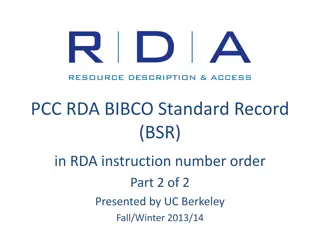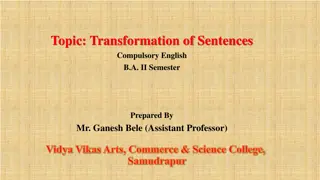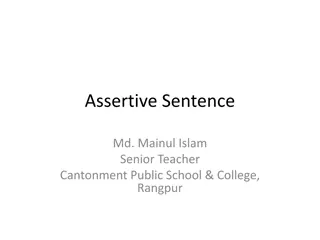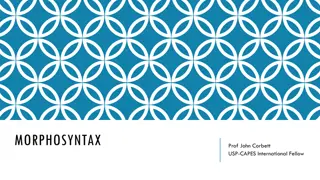Forming Interrogative Statements in Luganda with MU-MI Class Subjects
Learn how to turn simple sentences with MU-MI class subjects into interrogative statements in Luganda by replacing the full stop with a question mark. Understand the changes in prefixes when forming questions, such as 'g' to 'gy' and 'gu' to 'gwa'. Practice examples and grasp the rules for creating questions effectively.
Download Presentation

Please find below an Image/Link to download the presentation.
The content on the website is provided AS IS for your information and personal use only. It may not be sold, licensed, or shared on other websites without obtaining consent from the author. Download presentation by click this link. If you encounter any issues during the download, it is possible that the publisher has removed the file from their server.
E N D
Presentation Transcript
LESSON 2: SIMPLE SENTENCES Turning MU- MI Class simple sentences into interrogative statements In the last lesson we looked at forming simple sentences with nouns in MU- BA and Mu -Mi classes. You can turn the simple sentences with Mu-Mi class subjects into questions by simply removing the full stop and putting a question mark at the end. When speaking, the voice will go up at the end for a question, while for a statement the voice comes down at the end.
Examples Omuti gugudde? Has the tree fallen? Emiti gigudde? Have the trees fallen? Omuyembe gumeze? Has the mango tree sprouted? Emiyembe gimeze? Have the mango trees sprouted? Omusota gudduse? Has the snake run? Emisota gidduse? Have the snakes run?
Please note: In some cases the prefix gu turns into gwe and in these cases the plural prefix g turns into gye This arises when the root verb begins with vowel e and since in Luganda we do not write two different vowels next to each other in a word, u- e combination becomes we E.g: We have root verb engera , meaning to ripen so the sentence will be Omuyembe gu + engera = gwengera Omuyembe gwengera w The mango is ripening up.
More examples Omusota gu + ebase = Omusota gwebase If gu is being added to a verb root which begins with vowel a then then it becomes gwa E.g Omupiira gu + abise Omupiira gwabise. The ball has burst. Omusota gu + asama = Omusota gwasama The snake is opening its mouth. w
In plural In plural, gi + e = gye and gi + a = gya Examples: Emiyembe gi + engera = Emiyembe gyengera. Emisota gi + asama = Emisota gyasama. NB: You can sometimes hear some people say Omuyembe guyengera or Omusota guyasama but these are usually children and learners who have not yet grasped the above language rule.
SIMPLE SENTENCES WITH THE LI- MA CLASS SUBJECTS Li- ma class subjects are those nouns which begin with prefix li added to the root of the noun in singular and prefix ma added to the root of the noun when turning them to plural. Examples: Liiso Eye Maaso eyes Linnyo - Tooth Mannyo Teeth Lyato - Boat Maato - Boats (NB: Lyato comes from Li (subject prefix) + ato (root of the noun) and because in Luganda we do not write two dissimilar vowels next to each other, i+a becomes ya, thus the word lyato)
Examples of simple sentences When forming subject- predicate sentences with nouns in the Li- Ma class, you add prefix li to the root verb when the subject is in singular. Examples Linnyo lisala - Erinnyo lisala. - A tooth cuts. Liiso liraba - Eriiso liraba. - The eye sees. Lyato litambula - Eryato litambula - The boat travels (Note that the letter e at the beginning of the noun denotes article the or a )
Plural When forming simple sentences with nouns in Li- Ma class, in plural you add prefix ga to the root of the verb. Examples: Mannyo gasala. - Amannyo gasala. - The teeth cut. Maaso galaba - Amaaso galaba. - The eyes see. Maato gatambula - Amaato gatambula -The boats travel. (Note that the letter A at the beginning of the noun denotes article the )
NOTE: Please take note that noun class prefix li added to many nouns in this category, changes form and adopts the first consonant of the root noun doubling it and giving it a strong sound E.g Li + sasi= lisasi = Ssasi Ssasi ligudde Essasi ligudde. The bullet has fallen. Li + tabi = Litabi= Ttabi Ttabi likaze. Ettabi likaze The branch (of a tree) has dried up. s T
However in plural, the ma prefix is clearly seen replacing one of the consonants at the beginning of the noun root thus proving that the noun belongs to the Li- Ma class. Examples: Masasi gagudde Amasasi gagudde. Matabi gakaze. Amatabi gakaze. So many nouns belonging to the Li- ma class do not carry the Li prefix but will have a double consonant at the beginning with one of the consonants representing the class prefix.
